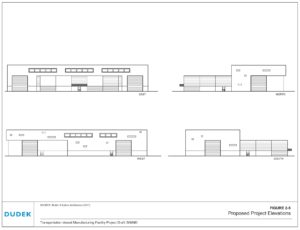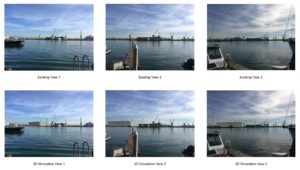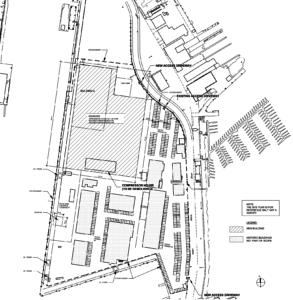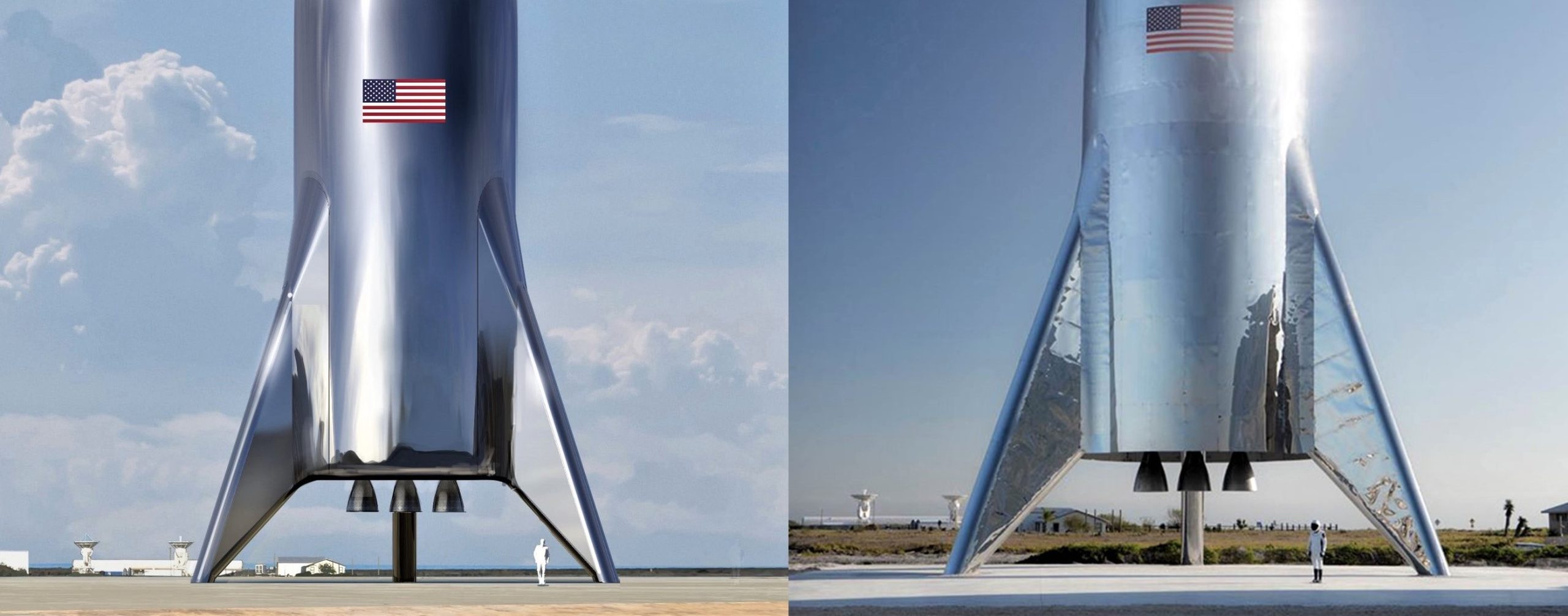
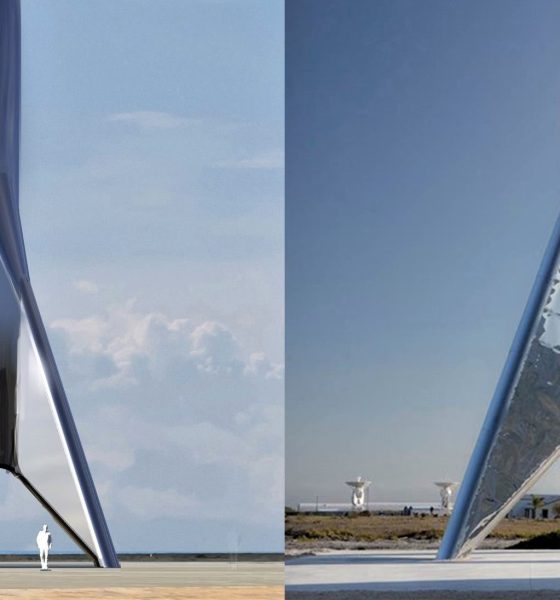
News
SpaceX to move Starship and Super Heavy production to Texas as hop tests near [updated]
SpaceX announced today that plans to ultimately build BFR (now known as Starship/Super Heavy) in the Port of Los Angeles have at least initially been replaced with a decision to move that development to South Texas, although details about the new facilities and their timelines remain have yet to be shared.
Drawn to one possible conclusion, this could mean that SpaceX no longer intends to build a BFR factory in the Port of Los Angeles, while all Falcon 9/Heavy, Merlin, and Raptor manufacturing will remain in the company’s Hawthorne, CA headquarters for the foreseeable future. However, the statements do not preclude the possibility that SpaceX still plans to develop an oceanside factory in the near future for Super Heavy, Starship, or both.
SpaceX will not longer be manufacturing its Mars spaceship and rocket booster at the Port of Los Angeles. Instead, the work will be done in South Texas. https://t.co/LqBfPawiZf
— Los Angeles Times (@latimes) January 16, 2019
Update: CEO Elon Musk stated on Twitter that the Los Angeles Times’ original report and a partial miscommunication on behalf of SpaceX misconstrued an official statement that early-stage Starship and Super Heavy prototype construction and development would stay in South Texas for the time being. It appears that SpaceX’s Port of LA plans remain largely unchanged.
The source info is incorrect. Starship & Raptor development is being done out of our HQ in Hawthorne, CA. We are building the Starship prototypes locally at our launch site in Texas, as their size makes them very difficult to transport.
— Elon Musk (@elonmusk) January 16, 2019
“To streamline operations, SpaceX is developing and will test the Starship test vehicle at our site in South Texas. This decision does not impact our current manufacture, design, and launch operations in Hawthorne and Vandenberg Air Force Base in California. Additionally, SpaceX will continue recovery operations of our reusable Falcon rockets and Dragon spacecraft at the Port of Los Angeles.” – SpaceX, January 16th, 2019
In early 2018, SpaceX announced that it had required a new berth in Port of San Pedro with the specific intention of building a brand-new BFR factory. By keeping BFR production in Los Angeles and locating it directly adjacent to its transportation mode of choice (a barge from California to Texas), the official hope was to retain the best aerospace talent in the US (generally centered around central California) and ensure that its main Hawthorne factory was just a short drive away while still being able to relatively affordably transport massive 9m/30 foot-diameter BFR spaceships and boosters between California and Texas.
Also speaking in 2018, COO and President Gwynne Shotwell noted that the estimated cost of moving a BFR-sized object from its main Hawthorne factory to Port of LA would average $5M for a one-way trip. For context, that is almost 10% of the list price of an entirely new Falcon 9 rocket ($62M) just to perform basic, necessary logistics. As a result, SpaceX decided to build a permanent factory at a Port of LA dock, where the company had already sprung a giant tent to begin prototype fabrication. Known as Berth 240, it’s now unclear whether SpaceX will retain and still develop the Port of San Pedro plot into a permanent facility, estimated to cost a few tens of millions of dollars to complete.
- SpaceX currently uses Berth 240 as fairing recovery vessel Mr. Steven’s base of operations. (Pauline Acalin)
- Most of the Berth 240 plot features decrepit but historic buildings from the early 20th century – SpaceX is required by its EIS to help preserve them and can only demolish one small hangar. (Pauline Acalin)
- Over the last six months, SpaceX has VERY gradually prepared the foundation of its prospective Berth 240 factory, although barely any visible progress has been made. (Pauline Acalin, 11/30/18)
- Blueprints of the proposed BFR factory at Berth 240. (SpaceX)
- Renders of the proposed BFR factory at Berth 240. (SpaceX)
- An overview of the two planned stages of BFR factory construction, March 2018. (SpaceX)
In the company’s approved environmental impact assessment, the implication was that the BFR factory could double as dedicated post-recovery processing and refurbishment facility for regular Falcon 9 missions and provide a far more spacious dock for drone ship Just Read The Instructions and support vessel NRC Quest. That sort of facility could easily still provide significant value to SpaceX, although it may be the case that it would not earn its keep nearly well enough to account for the redundancy of refurbishing at Port of LA instead of simply shipping recovered Falcon 9 boosters to the main Hawthorne factory, which can already host the refurbishment of at least two Falcon 9 boosters simultaneously.
Starship Hopper has been taken apart again (for the installation of the bulkhead etc.)
📸NSF's BocaChicaGalhttps://t.co/DlTj9Qiijz
NSF Overview News Article by Thomas Burghardt @TGMetsFan98 for those catching up:https://t.co/rgliFAkBMC pic.twitter.com/DzSJzjSvoI
— NSF – NASASpaceflight.com (@NASASpaceflight) January 15, 2019
SpaceX may also still want to have LA facilities capable of affordably supporting Starship and Super Heavy structures development and production in the event that some of its excellent staff of engineers and technicians are not interested in moving from Los Angeles to the sparsely-populated southeast tip of Texas. In the meantime, the company continues to work towards the completion of its first flightworthy(ish) Starship prototype at its rapidly expanding South Texas facilities, with CEO Elon Musk indicating that hop tests of the vehicle could begin as early as February or March 2019.
Expect a new article on the recent Starship hopper progress very soon!

Elon Musk
Elon Musk’s X will start using a Tesla-like software update strategy
The initiative seems designed to accelerate updates to the social media platform, while maintaining maximum transparency.

Elon Musk’s social media platform X will adopt a Tesla-esque approach to software updates for its algorithm.
The initiative seems designed to accelerate updates to the social media platform, while maintaining maximum transparency.
X’s updates to its updates
As per Musk in a post on X, the social media company will be making a new algorithm to determine what organic and advertising posts are recommended to users. These updates would then be repeated every four weeks.
“We will make the new 𝕏 algorithm, including all code used to determine what organic and advertising posts are recommended to users, open source in 7 days. This will be repeated every 4 weeks, with comprehensive developer notes, to help you understand what changed,” Musk wrote in his post.
The initiative somewhat mirrors Tesla’s over-the-air update model, where vehicle software is regularly refined and pushed to users with detailed release notes. This should allow users to better understand the details of X’s every update and foster a healthy feedback loop for the social media platform.
xAI and X
X, formerly Twitter, has been acquired by Elon Musk’s artificial intelligence startup, xAI last year. Since then, xAI has seen a rapid rise in valuation. Following the company’s the company’s upsized $20 billion Series E funding round, estimates now suggest that xAI is worth tens about $230 to $235 billion. That’s several times larger than Tesla when Elon Musk received his controversial 2018 CEO Performance Award.
As per xAI, the Series E funding round attracted a diverse group of investors, including Valor Equity Partners, Stepstone Group, Fidelity Management & Research Company, Qatar Investment Authority, MGX, and Baron Capital Group, among others. Strategic partners NVIDIA and Cisco Investments also continued support for building the world’s largest GPU clusters.
News
Tesla FSD Supervised wins MotorTrend’s Best Driver Assistance Award
The decision marks a notable reversal for the publication from prior years, with judges citing major real-world improvements that pushed Tesla’s latest FSD software ahead of every competing ADAS system.

Tesla’s Full Self-Driving (Supervised) system has been named the best driver-assistance technology on the market, earning top honors at the 2026 MotorTrend Best Tech Awards.
The decision marks a notable reversal for the publication from prior years, with judges citing major real-world improvements that pushed Tesla’s latest FSD software ahead of every competing ADAS system. And it wasn’t even close.
MotorTrend reverses course
MotorTrend awarded Tesla FSD (Supervised) its 2026 Best Tech Driver Assistance title after extensive testing of the latest v14 software. The publication acknowledged that it had previously criticized earlier versions of FSD for erratic behavior and near-miss incidents, ultimately favoring rivals such as GM’s Super Cruise in earlier evaluations.
According to MotorTrend, the newest iteration of FSD resolved many of those shortcomings. Testers said v14 showed far smoother behavior in complex urban scenarios, including unprotected left turns, traffic circles, emergency vehicles, and dense city streets. While the system still requires constant driver supervision, judges concluded that no other advanced driver-assistance system currently matches its breadth of capability.
Unlike rival systems that rely on combinations of cameras, radar, lidar, and mapped highways, Tesla’s FSD operates using a camera-only approach and is capable of driving on city streets, rural roads, and freeways. MotorTrend stated that pure utility, the ability to handle nearly all road types, ultimately separated FSD from competitors like Ford BlueCruise, GM Super Cruise, and BMW’s Highway Assistant.
High cost and high capability
MotorTrend also addressed FSD’s pricing, which remains significantly higher than rival systems. Tesla currently charges $8,000 for a one-time purchase or $99 per month for a subscription, compared with far lower upfront and subscription costs from other automakers. The publication noted that the premium is justified given FSD’s unmatched scope and continuous software evolution.
Safety remained a central focus of the evaluation. While testers reported collision-free operation over thousands of miles, they noted ongoing concerns around FSD’s configurable driving modes, including options that allow aggressive driving and speeds beyond posted limits. MotorTrend emphasized that, like all Level 2 systems, FSD still depends on a fully attentive human driver at all times.
Despite those caveats, the publication concluded that Tesla’s rapid software progress fundamentally reshaped the competitive landscape. For drivers seeking the most capable hands-on driver-assistance system available today, MotorTrend concluded Tesla FSD (Supervised) now stands alone at the top.
News
Elon Musk’s Grokipedia surges to 5.6M articles, almost 79% of English Wikipedia
The explosive growth marks a major milestone for the AI-powered online encyclopedia, which was launched by Elon Musk’s xAI just months ago.

Elon Musk’s Grokipedia has grown to an impressive 5,615,201 articles as of today, closing in on 79% of the English Wikipedia’s current total of 7,119,376 articles.
The explosive growth marks a major milestone for the AI-powered online encyclopedia, which was launched by Elon Musk’s xAI just months ago. Needless to say, it would only be a matter of time before Grokipedia exceeds English Wikipedia in sheer volume.
Grokipedia’s rapid growth
xAI’s vision for Grokipedia emphasizes neutrality, while Grok’s reasoning capabilities allow for fast drafting and fact-checking. When Elon Musk announced the initiative in late September 2025, he noted that Grokipedia would be an improvement to Wikipedia because it would be designed to avoid bias.
At the time, Musk noted that Grokipedia “is a necessary step towards the xAI goal of understanding the Universe.”
Grokipedia was launched in late October, and while xAI was careful to list it only as Version 0.1 at the time, the online encyclopedia immediately earned praise. Wikipedia co-founder Larry Sanger highlighted the project’s innovative approach, noting how it leverages AI to fill knowledge gaps and enable rapid updates. Netizens also observed how Grokipedia tends to present articles in a more objective manner compared to Wikipedia, which is edited by humans.
Elon Musk’s ambitious plans
With 5,615,201 total articles, Grokipedia has now grown to almost 79% of English Wikipedia’s article base. This is incredibly quick, though Grokipedia remains text-only for now. xAI, for its part, has now updated the online encyclopedia’s iteration to v0.2.
Elon Musk has shared bold ideas for Grokipedia, including sending a record of the entire knowledge base to space as part of xAI’s mission to preserve and expand human understanding. At some point, Musk stated that Grokipedia will be renamed to Encyclopedia Galactica, and it will be sent to the cosmos.
“When Grokipedia is good enough (long way to go), we will change the name to Encyclopedia Galactica. It will be an open source distillation of all knowledge, including audio, images and video. Join xAI to help build the sci-fi version of the Library of Alexandria!” Musk wrote, adding in a later post that “Copies will be etched in stone and sent to the Moon, Mars and beyond. This time, it will not be lost.”



